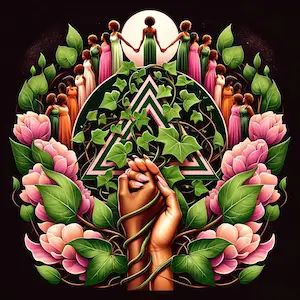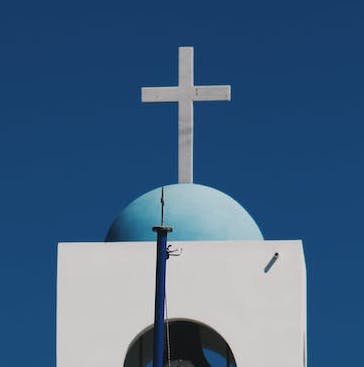The samurai, Japan’s legendary warrior class, have captured the imagination of people around the world for centuries. Known for their unrivaled discipline, unwavering loyalty, and martial prowess, the samurai have left an indelible mark on history. Beyond their renowned skills in swordsmanship and battle tactics, the samurai also cultivated a rich cultural tradition, among which the enigmatic and powerful world of samurai chants holds a unique and fascinating place. These chants, steeped in the principles of Bushido, served a variety of purposes, from instilling discipline and focus to boosting morale and intimidating enemies.
In this article, we will delve into the captivating realm of samurai chants, exploring their origins, various types, and enduring influence on modern music and culture.

Table of Contents
Introduction to Samurai Chants
Samurai chants hold a special place in Japanese culture. They reflect the warrior spirit and the unique connection between music and martial arts. These chants are not only a way to motivate and inspire samurai warriors but also an essential part of their training and discipline. In this article, we will explore the fascinating world of samurai chants, their history, types, and influence on modern music and culture.
The History of Samurai Chants
Samurai Culture and the Power of Music
The samurai were the elite warrior class in feudal Japan, known for their dedication to the code of Bushido and their mastery of martial arts. Music played a significant role in their lives, as it was believed to have the power to influence the mind, body, and spirit. Chanting was one way they harnessed this power, using it to instill discipline, focus, and unity among the warriors.
Traditional Instruments Used in Samurai Chants
Several traditional Japanese instruments were used in samurai chants, including the taiko drums, biwa, and koto. These instruments helped create a unique and mesmerizing sound that, when combined with the powerful words and rhythm of the chants, had a profound effect on the listeners.
Types of Samurai Chants
War Chants
Jinki
Jinki were powerful war chants used by samurai warriors to boost their morale and intimidate their enemies. These chants often told stories of legendary battles and heroic deeds, serving as a reminder of the samurai’s duty to their lord and the ideals of Bushido.
Hyōshigi
Hyōshigi is another type of war chant performed using wooden clappers. The rhythmical clapping sound was used to signal the advance or retreat of troops, communicate tactical instructions, or simply create a sense of unity and focus among the warriors.
Training Chants
Heihō-Ogi
Heihō-Ogi are chants used in martial arts training to help students memorize techniques and principles. The chants are often recited in a rhythmic manner, making it easier for students to remember complex movements and sequences.
Bushido Shoshinshu
The Bushido Shoshinshu is a collection of teachings on the code of the samurai, written by Taira Shigesuke in the 18th century. It contains various chants and poems that samurai would recite to remind themselves of the virtues and principles they were expected to live by.
Examples of Samurai Chants
Finding historically documented samurai chants is challenging due to the scarcity of sources. Below are known historical artifacts of chants or that originated samurai chants
1. The Hagakure:
The Hagakure, also known as “The Book of the Samurai,” is a practical and spiritual guide for samurai warriors, written by Yamamoto Tsunetomo in the early 18th century. It contains many teachings and aphorisms, including the following chant:
“Bushido is realized in the presence of death. In the case of having to choose between life and death, you should choose death. There is no other reasoning. Move forward in life with a determination to die.”
2. Heihō Kadensho:
The Heihō Kadensho is a famous martial arts treatise written by Yagyū Munenori, a samurai and fencing instructor in the early 17th century. One of the chants from this work emphasizes the importance of mastering the mind:
“To know the way of the sword, one must first know the heart. The heart is the foundation of everything. The heart is the source of all techniques.”
3. The Death Poem of Saito Toshimitsu:
Saito Toshimitsu, a samurai from the Warring States period, wrote a poignant death poem before facing his fate in battle:
“A single sword thrust Cuts through the autumn wind And the endless sky.”
4. A Poem by Uesugi Kenshin:
Uesugi Kenshin, a powerful 16th-century daimyo and warlord, composed the following poem reflecting on the fleeting nature of life:
“Life is like a journey, Passing travelers stopping by. The universe, too, is nothing more Than a temporary inn.”
These examples showcase the depth and wisdom found in samurai chants and poems, which often reflect the warriors’ dedication to the principles of Bushido, as well as their thoughts on life, death, and the nature of existence.
Examples of Training Chants
Original Japanese:
刀の音、心の音、 修行の道を進む。
Romanized Japanese:
Katana no oto, kokoro no oto, Shugyō no michi wo susumu.
English translation:
The sound of the sword, the sound of the heart, Advancing on the path of training.
Original Japanese:
無心の境地へ、 気持ちを集中。
Romanized Japanese:
Mushin no kyōchi e, Kimochi wo shūchū.
English translation:
Toward a state of no-mind, Focus the spirit.
Original Japanese:
見る力、聞く力、 感じる力、磨く。
Romanized Japanese:
Miru chikara, kiku chikara, Kanjiru chikara, migaku.
English translation:
The power to see, the power to hear, The power to feel, polish them all.
Original Japanese:
忍耐と精神、 武士の訓練。
Romanized Japanese:
Nintai to seishin, Bushi no kunren.
English translation:
Patience and spirit, The training of a warrior.
Original Japanese:
身を捨て、名を捨て、 全てを学ぶ。
Romanized Japanese:
Mi wo sute, na wo sute, Subete wo manabu.
English translation:
Discard the self, discard the name, Learn everything.
Examples of War Chants
Original Japanese:
勇敢なる戦士、 天に昇る。
Romanized Japanese:
Yūkan naru senshi, Ten ni noboru.
English translation:
Brave warriors, Rise to the heavens.
Original Japanese:
敵陣を破り、 栄光を手に入れよ。
Romanized Japanese:
Tekijin wo yaburi, Eikō wo te ni ire yo.
English translation:
Break through enemy lines, Seize the glory.
Original Japanese:
一意専心、 勝利への道。
Romanized Japanese:
Ichii senshin, Shōri e no michi.
English translation:
With single-minded devotion, The path to victory.
Original Japanese:
敵に立ち向かい、 無敵の精神を見せよ。
Romanized Japanese:
Teki ni tachimukai, Muteki no seishin wo mise yo.
English translation:
Face the enemy, Show them an invincible spirit.
Original Japanese:
風に舞い、雷に鳴り、 我らの勇気、揺るがぬ。
Romanized Japanese:
Kaze ni mai, kaminari ni nari, Warera no yūki, yuruganu.
English translation:
Dancing in the wind, roaring like thunder, Our courage, unshakable.
Modern Adaptations of Samurai Chants
Film and Television Soundtracks
Samurai chants have found their way into the world of film and television, often used in soundtracks to create a sense of authenticity and atmosphere. Movies like “The Last Samurai” and “Seven Samurai,” as well as television series like “Samurai Champloo,” have incorporated traditional Japanese music and samurai chants, introducing them to a global audience.
Contemporary Music
Contemporary musicians have also been inspired by samurai chants, incorporating their rhythms and melodies into modern music genres. Artists like Kitaro, Ryuichi Sakamoto, and Yoshida Brothers have blended traditional Japanese instruments and samurai chanting with electronic and world music, creating a unique and evocative sound.
The Enduring Appeal of Samurai Chants
The fascination with samurai chants is not surprising, considering their powerful connection to Japanese history and culture. These chants embody the spirit of the samurai, a symbol of strength, honor, and discipline that resonates with people across the globe. As a result, samurai chants continue to inspire artists and captivate audiences, ensuring their legacy endures for generations to come.
Conclusion
Samurai chants are a unique and powerful art form that highlights the deep connection between music and martial arts in Japanese culture. With their rich history, diverse types, and enduring influence on modern music and culture, they provide an invaluable window into the world of the samurai and the values they held dear. As we continue to explore and appreciate these captivating chants, we also honor the spirit of the samurai and their lasting impact on the world.
Samurai Chants Frequently Asked Questions
How were samurai chants used in battle?
Samurai chants were used in battle to boost morale, intimidate enemies, and communicate tactical instructions. They often told stories of legendary battles and heroic deeds to remind warriors of their duty and the ideals of Bushido.
What instruments are commonly associated with samurai chants?
Traditional Japanese instruments like the taiko drums, biwa, koto, and hyōshigi (wooden clappers) were often used in samurai chants to create a unique and powerful sound.
Why do people continue to be fascinated by samurai chants?
The fascination with samurai chants stems from their powerful connection to Japanese history and culture, as well as the enduring appeal of the samurai as a symbol of strength, honor, and discipline. This has led to their continued influence and popularity in various forms of art and entertainment.
See Related Posts

Gregorian Christmas Chants

Love Spell Chants

Best Softball Chants for U12

AKA Sorority Chants

Argentina Football Chants

Short Chants and Cheers

Alabama Football Chants

Everything to Know About African Chants

